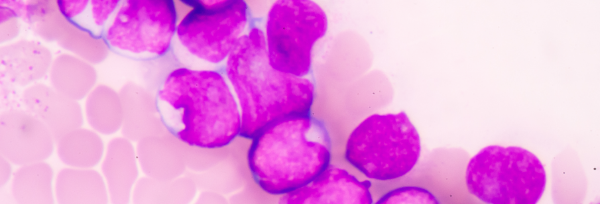MENARINI is a fully integrated privately owned pharma company with a long and successful heritage in strategic partnering across the globe. We have a profound know-how stemming from our strong R&D capabilities in key therapeutic areas, coupled with our excellence in commercial execution and our powerful direct presence on a global basis.
Chronic Myelomonocytic Leukemia (CMML) and Myelofibrosis (MF)
Chronic Myelomonocytic Leukemia (CMML) is a type of leukemia that is characterized by high numbers of white blood cells, called “monocytes”, in the blood and bone marrow. CMML is the most common of the MDS/MPN overlap diseases, with a prevalence estimated to be about 10% of that for MDS, and an annual incidence estimated to be 1.0 per 100,000 persons. The median age of occurrence of CMML is 70 years and a male predominance. Most patients present with non-specific features of ineffective hematopoiesis, particularly anemia and cytopenias, and clinical heterogeneity.
Myelofibrosis (MF) is a type of blood cancer in which the bone marrow is replaced by fibrous scar tissue. MF is a chronic myelproliferative neoplasm (MPN), defined as a group of clonal haematological malignancies that are characterized by excessive accumulation of one or more myeloid cell lineages and an inherent ability to transform to AML. The group includes polycythemia vera (PV), essential thrombocythemia (ET) and primary myelofibrosis (PMF). The 2016 WHO diagnostic criteria for MPN includes the presence of JAK2, MPL and CALR driver mutation as a major requirement, in addition to BM morphology. ET is the most common subtype of MPN with an annual incidence rate ranging from 0.21 to 2.27 per 100,000 people, and prevalence rate between 11 and 43 per 100,000 people. The median age at diagnosis is around 60 years, with about 15–20% of patients <40 years, and a female pre- dominance. PV is the next most common subtype with an annual incidence of 0.84 per 100,000 per annum, a median age of about 60–70 years and a slight male predominance. PMF is the least frequent subtype, with an incidence of 0.22 to 1.5 per 100,000 per annum, a median age of about 65 years and no obvious sex predominance. Less than 5% of patients with PMF are under the age of 40 years at the time of diagnosis.
Menarini and Stemline teams are working relentlessly to develop new therapeutic options for these hematological diseases. We currently have two clinical development programs for AML and one program for MF and CMML.
























